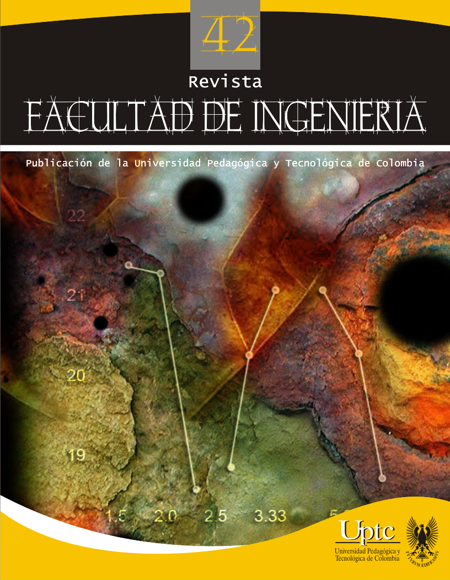Efecto del rendimiento del combustible en la decisión de compra de vehículo

Resumen
El artículo presenta los resultados de una investigación que se realizó con el propósito de estudiar el efecto del rendimiento del combustible en la adquisición de un vehículo nuevo. La metodología se basó en una encuesta de preferencias declaradas, en el contexto de un experimento de elección de dos alternativas no etiquetadas que se caracterizan por el costo del auto y el rendimiento del combustible. Con los datos acopiados se estimó un modelo Logit Multinomial, que permitió estudiar diferentes escenarios de elección. Se encontró que, en promedio, los individuos están dispuestos a pagar $1.020.000 por mejorar en 1 km/galón el rendimiento del combustible, este valor puede servir de referencia a la industria automotriz en el esfuerzo por producir vehículos de mayor rendimiento.
Palabras clave
disposición a pagar, encuestas de preferencias declaradas, mercado automotor, rendimiento del combustible
Citas
- C. S Jones and S. P. Mayfield, “Algae biofuels: versatility for the future of bioenergy”, Current Opinion in Biotechnology, vol. 23 (3), pp. 346-351, Jun. 2012. DOI: http://dx.doi.org/10.1016/j.copbio.2011.10.013. DOI: https://doi.org/10.1016/j.copbio.2011.10.013
- V. K. Gupta and M. G. Tuohy, Biofuel technologies: recent developments. Berlin: Springer Berlin Heidelberg, 2013. DOI: https://doi.org/10.1007/978-3-642-34519-7
- B. Lin and C. Xie, “Estimation on oil demand and oil saving potential of China’s road transport sector”, Energy Policy, vol. 61, pp. 472-482, Oct. 2013. DOI: http://dx.doi.org/10.1016/j.enpol.2013.06.017. DOI: https://doi.org/10.1016/j.enpol.2013.06.017
- B. Rajesh Kumar and S. Saravanan, “Use of higher alcohol biofuels in diesel engines: A review”, Renewable and Sustainable Energy Reviews, vol. 60, pp. 84-115, Jul. 2016. DOI: http://dx.doi.org/10.1016/j.rser.2016.01.085. DOI: https://doi.org/10.1016/j.rser.2016.01.085
- J. Ahn, G. Jeong and Y. Kim, “A forecast of household ownership and use of alternative fuel vehicles: A multiple discrete-continuous choice approach”, Energy Economics, vol. 30 (5), pp. 2091-2104, Sep. 2008. DOI: http://dx.doi.org/10.1016/j.eneco.2007.10.003. DOI: https://doi.org/10.1016/j.eneco.2007.10.003
- C. Erdem, I. Sentürk and T. Simsek, “Identifying the factors affecting the willingness to pay for fuel-efficient vehicles in Turkey: a case of hybrids”, Energy Policy, vol. 38 (6), pp. 3038-3043, Jun. 2010. DOI: http://dx.doi.org/10.1016/j.enpol.2010.01.043. DOI: https://doi.org/10.1016/j.enpol.2010.01.043
- T. Sakaguchi, “Influence of diffusion of fuelefficient motor vehicles on gasoline demand for individual user owned passenger cars”, Energy Policy, vol. 28 (12), pp. 895-903, Oct. 2000. DOI: http://dx.doi.org/10.1016/S0301-4215(00)00071-9. DOI: https://doi.org/10.1016/S0301-4215(00)00071-9
- D. Brownstone, D. S. Bunch and K. Train, “Joint mixed logit models of stated and revealed preferences for alternative-fuel vehicles”, Transportation Research Part B: Methodological, vol. 34 (5), pp. 315-338. Jun. 2000. DOI: http://dx.doi.org/10.1016/S0191-2615(99)00031-4. DOI: https://doi.org/10.1016/S0191-2615(99)00031-4
- T. S. Turrentine and K. S. Kurani, “Car buyers and fuel economy?”, Energy Policy, vol. 35 (2), pp. 1213-1223. Feb. 2007. DOI: http://dx.doi.org/10.1016/j.enpol.2006.03.005. DOI: https://doi.org/10.1016/j.enpol.2006.03.005
- J. J. Soto, V. Cantillo and J. Arellana, “ Modelación híbrida para la elección de vehículos con energías alternativas”, Interciencia, vol. 39 (9), pp. 666-672. Sep. 2014.
- K. Train, Discrete choice methods with simulation. United Kingdom: Cambridge University Press, 2003. DOI: http://dx.doi.org/10.1017/CBO9780511753930. DOI: https://doi.org/10.1017/CBO9780511753930
- A. Orro, “Modelos de elección discreta en transportes con coeficientes aleatorios”. Tesis de doctorado, Facultad de Ingeniería Civil, Universidad de la Coruña, Coruña, España, 2005.
- J. J. Louviere, R. J. Meyer, D. S. Bunch et al., “Combining Sources of Preference Data for Modeling Complex Decision Processes”, Marketing Letters, vol. 10 (3), pp. 205-217, Aug. 1999. DOI: http://dx.doi.org/10.1023/A:1008050215270. DOI: https://doi.org/10.1023/A:1008050215270
- D. Kahneman, “Maps of bounded rationality, prize lecture”. In: T. Frängsmyr (ed), Les Prix Nobel: The Nobel Prizes 2002. Stockholm: Nobel Foundation, 2003.
- J. Bates, “History of demand modelling”. In: D. A. Hensher and K. J. Button (ed), Handbook of transport modelling, pp. 11-33. Amsterdam: DOI: https://doi.org/10.1108/9780857245670-002
- Pergamon, 2000.
- M. Ben-Akiva and S. R. Lerman, Discrete choice analysis, theory and application to travel demand. Cambridge, Massachusetts: The MIT Press, 1985.
- J. D. Ortúzar and L. G. Willumsen, Modelling transport. Chichester: John Wiley & Sons, 2011. DOI: https://doi.org/10.1002/9781119993308
- J. Téllez, M. Hernández, M. C. Llanes et al., Situación automotriz Colombia. Bogotá: BBVA Research, 2012.
- G. Koçur, T. Adler, W. Hyman and E. Audet, Guide to Forecasting Travel Demand with Direct Utility Measurement. Washington D.C.: USA Department of Transportation, 1982.
- L. Márquez, L. A. Gallo and C. A. Chacón, “Influence of Parking Costs on the Use of Cars in Bogota”, Ing. Univ. Bogotá, vol. 15 (1), pp. 105-124, Jan. – Jun. 2011.
- M. Bierlaire, “A free package for the estimation of discrete choice models”, Proceedings of the 3rd Swiss Transportation Research Conference, Ascona, Switzerland, 2003.
- M. Espey, “Do Consumers Value Fuel Economy?”, Regulation, Winter 2005-2006, pp. 8-10, 2006.
- P. S. McCarthy and R. S. Tay, “New vehicle consumption and fuel efficiency: A nested Logit approach”, Transportation Research Part E: Logistics and Transportation Review, vol. 34 (1), pp. 39-51, Mar. 1998. DOI: http://dx.doi.org/10.1016/S1366-5545(97)00042-2. DOI: https://doi.org/10.1016/S1366-5545(97)00042-2